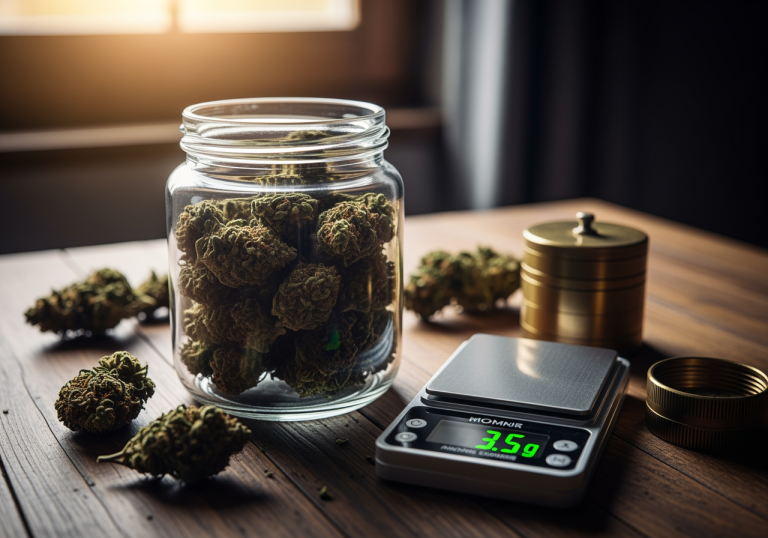Muscle Cramps
Can medical cannabis help patients relieve symptoms of muscle cramps? Find out below.
What are muscle cramps?
A muscle cramp happens when the muscle contracts suddenly and uncontrollably. The cramps can coincide in one or more muscles and can be painful. They typically last a few seconds to 15 minutes.
Muscle cramps can be a symptom of various medical issues. They are often associated with a muscle strain but can also be a sign of medical conditions such as diabetes and liver disease. They can interfere with your daily life and affect sleep, but muscle cramps are not severe in most cases.
Who usually gets them?
Muscle cramps are common among those who are:
- Elderly
- Infants
- Pregnant
- Athletes
- Overweight
Causes of Muscle Cramps
Various factors that cause muscle cramps may include the following:
- Aging: Losing muscle mass can put a strain on the muscles. These changes can lead to more frequent muscle cramps as we age.
- Dehydration: Losing body fluids while exercising can cause the muscles to cramp.
- Hypothyroidism: A less-active thyroid gland can lead to muscle cramps.
- Low electrolyte levels: Low calcium or potassium levels in the blood can cause muscle cramps.
- Medication: Certain medicines, including pseudoephedrine and statins, can cause involuntary muscle cramping.
- Menstrual Cycle: People who experience monthly periods can have significant muscle cramping due to that process.
- Nerve disorders: A pinched nerve or spinal cord injury can cause nerve compression, leading to muscle cramps.
- Physical strain: Overusing the muscles during exercise or strenuous activities can lead to cramps.
- Pregnancy: Pregnant women may experience cramps due to low electrolyte levels, circulation changes, and pressure on the nerves.
- Tight muscles: Inactivity and insufficient stretching can cause muscles to cramp and spasm.
Muscle cramps can happen to any muscle; however they occur most often in the following areas:
- Abdomen
- Arms
- Hands
- Feet
- Legs
Diabetes and MMJ
Diabetes is a chronic disease when the pancreas no longer makes insulin, or the body doesn’t use the insulin it produces. Insulin is a hormone made by the pancreas that allows glucose from our food to pass from the bloodstream into the cells to produce energy. All carbohydrates are broken down into glucose in the blood and then assisted by insulin to travel to blood cells.
Being unable to produce insulin or utilize it raises blood glucose levels. Over time, high glucose levels can cause damage to the body and the failure of various organs and cause serious health problems like heart disease, kidney disease, or vision loss. There’s no cure for diabetes, but maintaining weight, eating healthy food, and being active can help manage the condition.
The Texas A&M School of Public Health performed a 2022 data analysis study that examined national survey results from over 15,000 people. They found that female cannabis consumers who consumed substantial amounts of cannabis had a lower incidence of diabetes than females with little to no cannabis use.
A 2016 trial in Diabetes Care found that THCv could present a new therapeutic option for glycemic control in people with type 2 diabetes. The authors noted that using THCV significantly impacts fasting blood glucose levels and improves pancreatic function.
A 2013 study of around five-thousand adults found that marijuana use was associated with lower fasting insulin levels, insulin resistance, and smaller waist circumference. Cannabis use acts through the direct and indirect stimulation of cannabinoid receptors in the endocannabinoid system. This cell-signaling system modulates the body’s central nervous system and helps maintain homeostasis.
Can medical marijuana help with muscle cramps?
Medical marijuana is commonly found to possess significant anti-inflammatory and antioxidant properties, which can help with muscle pain management reasonably quickly. Cannabinoid receptors bind to the brain and peripheral nerve cells and help regulate how you see and feel the pain to reduce symptoms. Medical cannabis, therefore, as opposed to other drugs, appears to be an excellent alternative to treat and manage pain and muscle cramps due to inflammation.
For menstruation-related muscle cramps, A 2008 study called “Cannabis Treatments in Obstetrics and Gynecology: A Historical Review” reports that “the use of weed to treat menstrual cramping is nothing new, dating back to the 1800s when Queen Victoria’s clinician allegedly prescribed her Mary Jane to alleviate period pain and symptoms of PMS.” Women have been cultivating, using, and advocating for cannabis since ancient Egypt. From a female Pharoah named Hatshepsut to Queen Victoria, many famous women of our past have used hemp for medicinal purposes, expressly to relieve menstrual cramps and alleviate childbirth symptoms for new moms.
The Daily News stated that medical cannabis relieves headaches, muscle cramps, low mood, and diarrhea and can be used topically or via inhalation. Chronic pain lasts extended and can occur in many body parts simultaneously. It typically interferes with a person’s daily routine and can lead to anxiety or depression.
CBD has anti-inflammatory qualities, can reduce pain, and even fully treat pain in some patients. It is also an antioxidant and can help reduce long-term inflammation. CBD contains cannabinoid receptors that can block chronic pain signals in the brain and trigger an increased immune response.
CBD and CBG may help with muscle cramps and spasms by reducing inflammation and calming the nervous system. More research is needed, but we can be sure to see more CBG products in the medical cannabis community within the next few years. We know that CBD is widely used across the United States and seems an excellent way to relieve muscle cramps and pain.
Last Updated: June 14, 2024
Get Your Medical Card
Connect with a licensed physician online in minutes
Table of Contents
Keep Reading
-
What Are The Early Signs You Have A Male Cannabis Plant?
Find out the early signs of a male cannabis plant and avoid wasting time growing the wrong plants. Click here now to discover if your plants are male or female!
-
Restful Nights: Uncovering The Potential Of CBD For Sleep
Uncover the transformative power of CBD for sleep with Restful Nights. Say goodbye to restless nights and hello to rejuvenating sleep by reading this enlightening article today!
-
How Many Grams In An Eighth Of Weed
Learn the ins and outs of cannabis measurements and find out exactly how many grams are in an eighth of weed. Don’t miss out on this essential knowledge – click here to become a cannabis measurement pro today!



